Combustion Analysis of Low-Speed Marine Engine Fueled with Biofuel
2023-03-01CunfengWeiGuoheJiangLeiCuiGangWuandShashaZhong
Cunfeng Wei, Guohe Jiang, Lei Cui, Gang Wu and Shasha Zhong
Abstract To study the applicability of biodiesel in marine engines, this research investigated the performance, combustion characteristics, and emission characteristics of biodiesel (B100), diesel, and a 50% volume blend of the two fuels (B50) in a marine engine.This study was conducted on a 4-cylinder, 520 mm-bore, two-stroke, low-speed marine engine with a common rail fuel and exhaust gas charge system.The three fuels were tested at different loads from 25%–100% with a step size of 25%.Results showed that the fuel consumption of pure biodiesel increased by about 13.5% and 3.8% relative to that of diesel at 25% and 100% loads, respectively, and by about 6% at 50% and 75% loads.In-cylinder combustion pressure was slightly reduced when the engine ran on biofuel, and black carbon emissions from biodiesel were reduced by an average of 54.7%.Compared with those from diesel, the carbon CO and total hydrocarbon emissions from B100 were reduced by 11.3% and 39%, respectively.Nitroxide emissions were elevated for B100 and B50 under all loading conditions.The properties of B50 blended diesel lie between those of B100 and diesel.In terms of combustion characteristics and emissions, biodiesel can be used without changing the engine parameters and can effectively reduce pollution, such as black carbon and carbon monoxide.
Keywords Low-speed engines; Emissions; Biodiesel; Black carbon; Low-carbon fuels
1 Introduction
In recent decades, the rapid growth of the global popula‐tion and industry has led to a rapid increase in energy de‐mand and consumption, resulting in the accelerated deple‐tion of nonrenewable fossil fuels and negatively affecting the human living environment (Hoang et al., 2021a).The massive shipping industry is responsible for more than 85% of the world’s international trade traffic.Its CO2emissions account for 2%–3% of total global emissions and are a key part of the global low-carbon development economy.A target was established at the 2018 IMO MEPC-72 conference to reduce the CO2emissions from global shipping to 40% of 2018 levels by 2030 and to strive toward a 70% reduction by 2050.As a consequence,the ship transportation sector needs low-carbon substitutes for conventional diesel fuels.Given that biomass-based biofuels are widely accessible, renewable, adaptable, and CO2-neutral (Amin, 2019), they become one of the most promising and financially feasible substitutes for conven‐tional fossil fuels (Ubramaniam et al., 2020).
The high viscosity of biodiesel prevents the atomization of the fuel, leading to injection problems and incomplete combustion (Wang et al., 2008).Raju et al.(2019) found that at high temperatures, the viscosity of biofuel de‐creased, leading to improved combustion and fuel atomiza‐tion and vaporization in diesel engines, thus enhancing en‐gine performance.In addition, vegetable oil has a lower calorific value than diesel, resulting in poor engine perfor‐mance, improved brake-specific fuel consumption (BSFC),and reduced engine torque and power (Keera et al., 2018;Özener et al., 2014).Rashed et al.(2016) studied the fuel properties of diesel engines by blending jatropha, palm,and moringa oil methyl esters each at 20% volume and showed that palm biodiesel outperformed moringa and jat‐ropha as alternative fuels, but the BSFC increased for all biodiesels.Yesilyurt and Aydin (2020) studied the effect of adding diethyl ether (DEE) to biodiesel–diesel blends on engine characteristics and found that the addition of 10%DEE to the fuel blend resulted in a 17.39% reduction in brake thermal efficiency (BTE) and a 29.15% increase in BSFC.Meanwhile, the addition of DEE to the algae biofuel mixture increased the maximum BTE of the engine by 7.2% and reduced the minimum brake-specific fuel con‐sumption by 6.3% (Joshi and Thipse, 2021).Shihadeh and Hochgreb (2000) conducted tests in a naturally aspirated single-cylinder engine and found that bio-oil had a similar thermal efficiency of combustion but a longer ignition de‐lay and a slower combustion rate compared with diesel.
In terms of exhaust emission characteristics, biodiesel b shows improved combustion and reduced smoke when used in engines due to its low aromatic hydrocarbon and sulfur levels and high oxygen content (Abedin et al.,2014).Other exhaust pollutants, such as hydrocarbons, car‐bon monoxide (CO), polycyclic aromatic hydrocarbons,and particulate matter, can also be substantially significant‐ly reduced by using biodiesel blends.
Researchers studied the performance and corrosion of biodiesel without changing the engine parameters (Dimitria‐dis et al., 2020; Simsek and Uslu, 2020).Hoang et al.(2020)combined injection advance angles on a constant-speed,single-cylinder, four-stroke turbocharged diesel engine to significantly improve engine performance and reduce pol‐lutant emissions.Dimitriadis improved the engine NOxemission reductions by 20% by delaying the moment of in‐jection during trials with biodiesel, but the particulate emissions were still below the diesel fuel levels (Nayak et al., 2022).Praveena et al.(2019) studied NOxreduction in a grapeseed oil biodiesel-fueled compression ignition (CI)engine using nano emulsions and SCR retro fitment.Some scholars also used 3D simulation software to calculate the combustion mechanism of biodiesel and its effect (Pravee‐na et al., 2019; Pan et al., 2021) on engine combustion emissions and to study the skeleton mechanism of biodie‐sel (Li et al., 2022).
Scholars have carried out many experiments and simula‐tions on biodiesel in engines; however, the use of biodiesel and its blends as fuel in the experiments has only been in‐vestigated on medium- and high-speed four-stroke en‐gines.In addition, only a few studies focused on the ef‐fects of biodiesel in low-speed marine engines under dif‐ferent load conditions.Most of the large ships in interna‐tional voyages use two-stroke low-speed engines as pro‐pulsion devices.Four-stroke engines differ from twostroke engines in sweeping and combustion, so the com‐bustion and emission characteristics of biodiesel in fourstroke engines cannot be generalized to two-stroke en‐gines.For the application of biodiesel in shipping, re‐search must first be conducted on its combustion and emis‐sion characteristics in two-stroke engines.
To fully understand the combustion and emission char‐acteristics of biofuels in low-speed two-stroke engines,this study conducted combustion experiments using diesel,biodiesel, and blended fuels as raw materials in a lowspeed marine engine and carried out detailed experimental research under its propulsion characteristics.The combus‐tion, performance, and emission characteristics inside the engine cylinder were analyzed using various types of test‐ing equipment, such as in-cylinder pressure monitoring and exhaust gas emission measurement, to investigate the combustion performance of biodiesel in low-speed twostroke engines.This study provided supporting data for the application of biodiesel in the maritime industry.
2 Test conditions and test methods
2.1 Experimental steps
All experiments were conducted on a 520 mm-bore twostroke marine engine.A hydrodynamic dynamometer was used to control the power output of the engine during the experiment.The engine runs at four different loads of 25%,50%, 75%, and 100% at its propulsion characteristics.For this study, 100% load was defined as the maximum load.The detailed parametric information of the engine is shown in Table 1.The arrangement of the experimental rig and test apparatus in the experiment is shown in Figure 1.

Table 1 Main engine parameters.
Experiments were conducted with a 50% blending ratio of biodiesel (B50) and 100% biodiesel, and Diesel Oil NO.0 was used as a reference fuel.Samples of each fuel type were collected during the experiment to determine their basic physical and chemical properties, and the re‐sults are shown in Table 2.
The in-cylinder pressure of the engine was recorded us‐ing Kistler’s 6 045 B cylinder pressure sensor, which was coupled with Kistler’s 2 614 DK angle encoder in the AVL List GmbH Indicom data acquisition equipment for data acquisition and combustion analysis of the engine during the experiment.The real-time monitoring of total hydrocar‐bon (THC), CO, NOx, CO2, and other pollutants in the en‐gine exhaust during the test was performed with a Horiba 7 500 gas analyzer.Black carbon concentration in the engine exhaust was measured using an AVL-415 smoke meter.The engine power was measured by a torque flange and controlled by a hydrodynamic dynamometer.The uncer‐tainty ranges of the instruments used are shown in Table 3.The in-cylinder pressure data of 100 consecutive work cy‐cles were recorded during the test to eliminate the effect of the cycle variation of the experimental data, and the average value was used for experimental analysis.

Figure 1 Test equipment layout
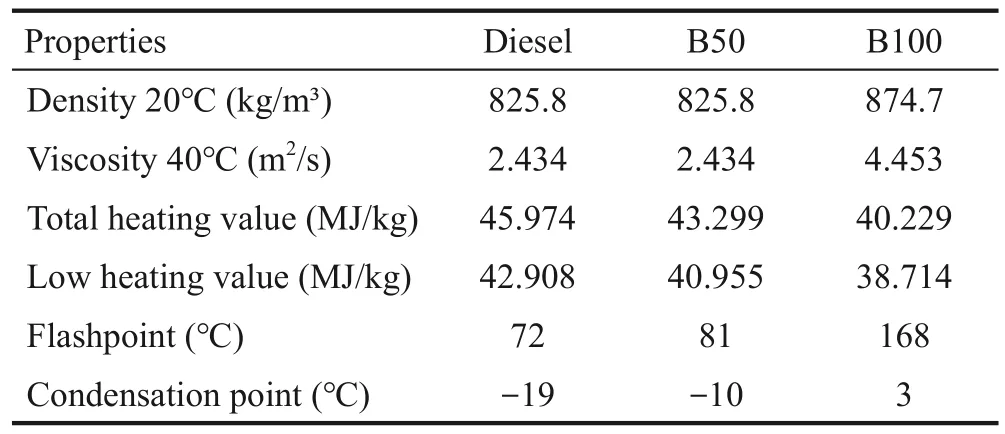
Table 2 Fuel composition
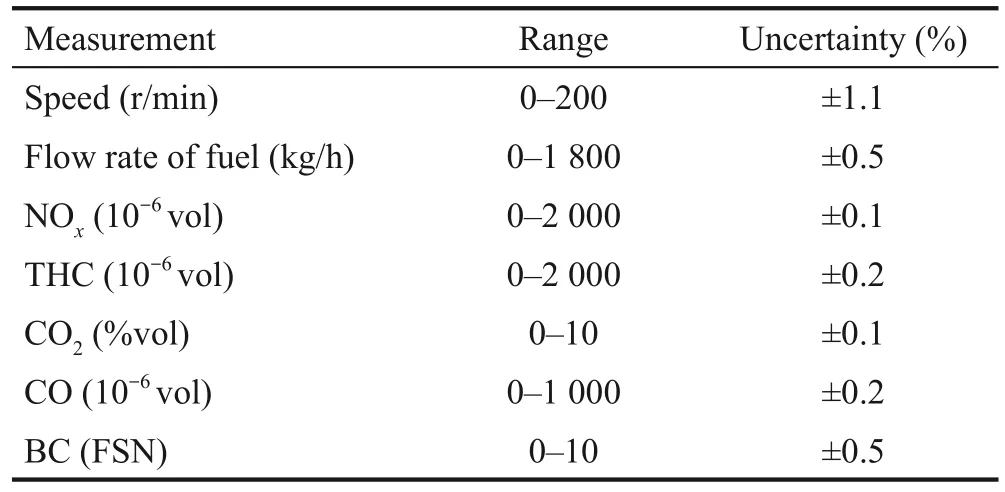
Table 3 Uncertainty of instruments and parameters
2.2 Calculation of the exothermic rate of combustion
Combustion heat release rate is one of the most impor‐tant parameters used to determine the combustion charac‐teristics of a fuel.It affects the overall engine performance and emission characteristics.In this study, the exothermic rate was calculated from the pressure profile in the cylin‐der during the experiment by applying the first law of ther‐modynamics, as shown in Eq.1.The heat loss from the cylinder wall was not considered in this calculation.
where dQ/dθis the exothermic rate for each crank angle,θis the crank angle,Pis the pressure,Vis the cylinder vol‐ume, andγis the specific heat value.
3 Discussion of results
3.1 Effect of biodiesel on engine performance
3.1.1 Fuel consumption analysis
The fuel consumption rate (i.e., BSFC) is an important parameter in determining whether biomass fuels can be commercialized.As shown in Figure 2, the fuel consump‐tion of B100 and B50 is higher than that of diesel at differ‐ent loads.This phenomenon is mainly due to the relatively low energy level of biodiesel under the same fuel amount due to its low calorific value, leading to its high fuel con‐sumption when burned in the engine to produce the same work (Pham et al., 2022).A comparison of the difference in fuel consumption among the three fuels at different loads reveals that the difference in fuel consumption be‐tween B100 and diesel at 25% engine load is about 13.5%at maximum, and this value decreases to about 3.8% at 100% engine load.This phenomenon may be related to the engine fuel injection pressure and combustion tempera‐ture, which are both relatively low at a low engine load;meanwhile, the injection hysteresis angle is large at a low engine load, making the biodiesel atomization poor and the fuel consumption high (Aguado-Deblas et al., 2022).Compared with diesel, the higher viscosity and density of biodiesel may result in higher ignition delay and fuel con‐sumption and lower BTE of biodiesel at low engine loads(Hoang et al., 2021b).

Figure 2 Relative BSFC and BTE with engine load for petroleum diesel and biodiesel blends
3.1.2 Indicated mean effective pressure (IMEP)
IMEP was analyzed to determine the effect of biodiesel on the engine.The high oxygen content in biodiesel en‐ables it to burn completely, thus improving its IMEP.How‐ever, the high amount of fatty acid methyl esters in biodie‐sel results in poor ignition quality and low IMEP.Figure 3 shows that the IMEP of biodiesel is slightly higher than that of diesel at a low engine load and is very close to that of diesel at a high engine load.The reason for this phenom‐enon may be that the fatty acid methyl esters and oxygen exhibit a good combination at a low engine load, thus pro‐viding efficient combustion (Xie et al., 2015).However,the fuel temperatures are not identical throughout these ex‐periments.The maximum ambient temperature at the time of the test has changed by 6°C.Therefore, the variation in IMEP may not be fully attributed to biodiesel.
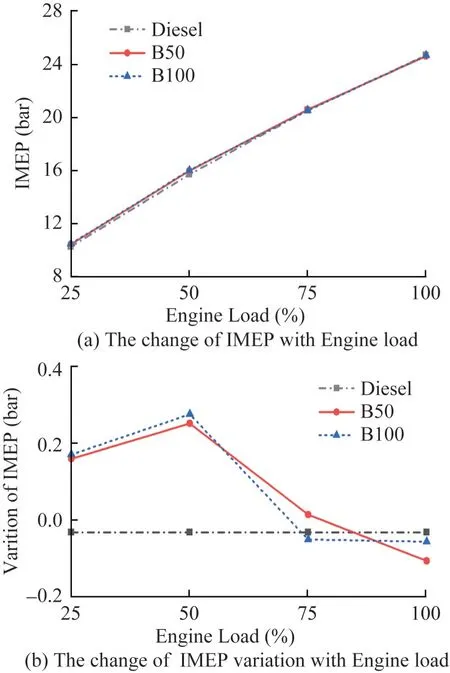
Figure 3 Variation of IMEP with engine load
3.1.3 Exhaust temperature analysis
Engine exhaust temperature is an important indicator of cylinder combustion temperature and is an essential param‐eter for analyzing exhaust emissions, especially NOxemis‐sions.Some scholars believe that the high combustion tem‐perature of biodiesel leads to high NOxemissions (Islam et al., 2015).Others reported the opposite trend, where the exhaust temperature of biodiesel and diesel blends is lower than that of diesel (Raslavičius and Bazaras, 2010).The same phenomenon was observed in our study, where the exhaust gas temperature was slightly reduced when the en‐gine was running on biodiesel.This phenomenon may be due to the low heat generation of biodiesel, which reduces the total released energy, peak cylinder temperature, and exhaust temperature.

Figure 4 Variation of exhaust gas temperature with engine load
3.2 Effect of biodiesel on engine combustion characteristics
3.2.1 Cylinder pressure
Cylinder pressure directly affects engine performance and emission characteristics (Muralidharan and Vasudevan,2011).Under the four engine loads, the cylinder pressure curve shows a similar pattern of change and 75% load is commonly the longest-operating load point during the oper‐ation of ship engines.Therefore, this study chooses to use 75% load.Hence, the cylinder pressure curve at 75% load is chosen as a representative for discussion.Figure 3 shows the variation of in-cylinder pressure with crankshaft rota‐tion angle for the three fuels at 75% engine load.As dis‐played in the partial magnification, the compression pres‐sure of biodiesel near the 1° CA crankshaft rotation angle after the upper stop is greater than that of B50 and B100.The main reason is that the high exhaust temperature of the engine when burning diesel increases the efficiency of the exhaust gas turbocharger, which in turn raises the swept pressure and slightly increases the compression pressure.The increase in compression pressure inevitably raises the maximum combustion pressure of the engine increase to a certain extent.As shown in the Figure 5, the in-cylinder pressure reaches its maximum at about 10° of crankshaft ro‐tation angle, and the maximum in-cylinder pressure of biodiesel is greater than that of B50 and B100.The deteriora‐tion of combustion due to the increased kinematic viscosity and poor atomization characteristics of biodiesel is another important reason for the decrease in cylinder pressure when the engine burns biodiesel (Sahoo et al., 2009).

Figure 5 Cylinder pressure at 75% engine load
3.2.2 Heat release rate (HRR)
HRR is another important parameter to evaluate the combustion characteristics of fuel.When the fuel is inject‐ed into the cylinder, the HRR is slightly negative due to the cooling effect of fuel evaporation.It becomes positive during the injection period after combustion has started.The initial stage of combustion is called premixed combus‐tion, which is very rapid due to the combustion of the fuel during the ignition delay (Zhang et al., 2015).Figure 6 shows the exothermic rates of the combustion of biodiesel blends and reference diesel fuel at engine-20-40 crankshaft rpm at 25%, 50%, 75%, and 100% engine loads.The com‐bustion moment of the fuel in the engine varies under dif‐ferent loads mainly because the engine speed is slow at low loads, and the injection duration is increased to reduce the combustion duration and NOxemissions.In addition,the peak HRR of pure diesel is higher than that of biodie‐sel; that is, diesel has a higher peak exothermic rate.This phenomenon may be due to the high viscosity of biodiesel at low engine loads and its poor atomization, which leads to incomplete combustion (Kumar et al., 2017).These fea‐tures facilitate the full combustion of the fuel near the up‐per combustion stop and improve the combustion efficien‐cy of the fuel.The low calorific value of biodiesel is anoth‐er factor associated with the reduced exothermic rate (Hos‐sain and Davies, 2012).

Figure 6 Heat release rate
3.3 Effect of biodiesel on engine emission characteristics
3.3.1 Black carbon emission analysis
The generation of black carbon in engines is a complex process involving gas-phase chemistry and phase transi‐tions from gas-phase precursors to solid particles (An et al., 2012).Black carbon in engines is mainly produced in the diffusion combustion phase of the fuel in the combus‐tion chamber, and the concentration of black carbon emis‐sions from engines is highly dependent on the fuel used.As shown in Figure 7, B50 and B100 fuels have 32.7%and 83.1% less black carbon concentration than diesel un‐der a full engine load, respectively.The main reason is that the high oxygen content of biodiesel promotes the ox‐idation of carbon and improves the combustion process(Wu et al., 2020), thus reducing the black carbon emission in the exhaust gas.Although the oxygen content of the fuel is the main factor affecting black carbon emissions, the long ignition delay of biodiesel provides additional time for the premixing of fuel and air.As a result, the black car‐bon concentrations are low.
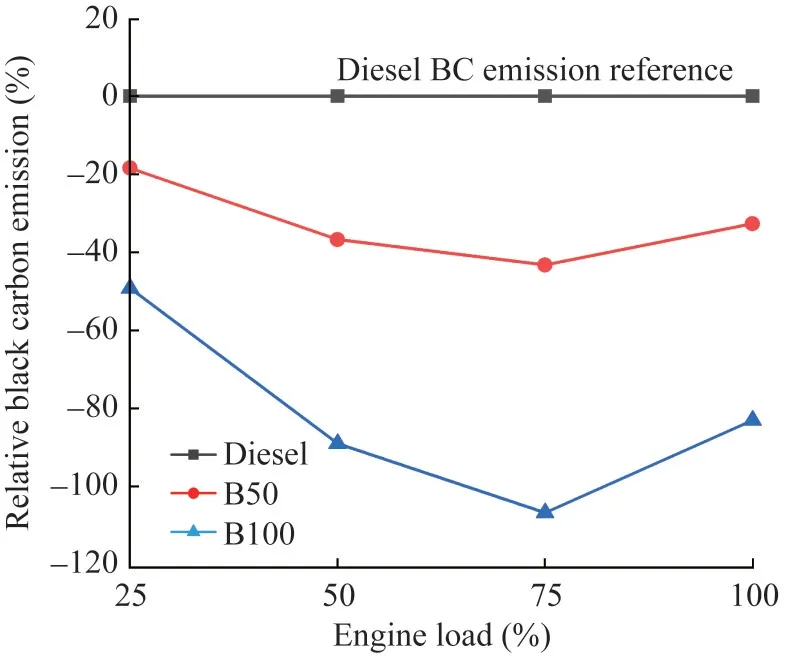
Figure 7 Variation of black carbon emission with engine load
3.3.2 NOxemission analysis
The correlation of the NOxemissions of biodiesel and its blends with engine load is shown in Figure 8.NOxde‐creases with the increasing engine load and reaches a mini‐mum value of 100% engine load.Although NOxgenera‐tion is controlled by delayed injection at low engine loads,the low speed prolongs the combination of oxygen and ni‐trogen atoms in the combustion chamber and thus increas‐es NOxemissions.As the engine load increases, the engine speed also increases, and the duration of high-temperature combustion is shortened, resulting in reduced NOxemis‐sions from the fuel mixture.In principle, the maximum incylinder temperature, high-temperature duration, and oxy‐gen concentration in the mixture have a dominant effect on NOxemissions.As shown in Figure 4, the exhaust tempera‐ture of the engine when burning diesel is higher than that when burning biodiesel, but the amount of NOxemission from biodiesel is greater than that from diesel.The reason for this phenomenon may be that oxygenated biodiesel produces more reactive free radicals than diesel; these free radicals inevitably accelerate combustion, making the NOxemissions of biodiesel higher than those of conventional diesel (Aguado-Deblas et al., 2020).
3.3.3 Carbon dioxide emission analysis
Figure 9 illustrates the variation of CO2emissions from biodiesel and its blends at different engine loads.The CO2emissions from the fuel blends show a tendency to de‐crease and then increase as the load increases.This finding is strongly related to the amount of engine fuel consump‐tion (Chen et al., 2018).Compared with diesel, a more than 20% increase in CO2emissions is observed for B100 because of its high oxygen amount, resulting in its en‐hanced combustion (Kodate et al., 2020).Although CO2emissions are slightly higher when engines use biofuels,biodiesel is still effective in reducing global carbon emis‐sions on a life-cycle basis (Chen et al., 2018).

Figure 8 Variation of NOx emission with engine load

Figure 9 Relative of CO2 emission with load
3.3.4 THC emission analysis
THC is mainly generated because the fuel atomizes in the low temperature region and cannot burn completely in the local area near the cylinder wall.Other causes of THC generation include the kinetic rate difference of chemical combustion and the sudden extinction of the combustion flame (Joshi and Thipse, 2021).The variation of THC emissions with engine load for diesel and biodiesel blends is shown in Figure 10.The reduction in THC emissions from B100 is about 39% of that from diesel.This phenom‐enon is mainly due to the molecular oxygen inherent in the biodiesel blend that promotes complete combustion and thus reduces THC emissions.Biodiesel has a high cetane number and is virtually free of aromatic hydrocarbons,which help fuel combustion and inhibit THC formation.The lower the aromatic content of the fuel, the lower the THC emissions.The high THC concentration at a low en‐gine load is mainly due to the increase in the engine injec‐tion delay at this load and the low combustion tempera‐ture, which also tends to cause local bursts of unburned fu‐el and generate THC.

Figure 10 Variation of THC emission with engine load
3.3.5 CO emission analysis
CO is an intermediate product of the incomplete combus‐tion of hydrocarbons in fuels.It is generated mainly due to the lack of sufficient oxygen to convert all carbon atoms to CO2when hydrocarbons are burned.As shown in Figure 11,CO emissions increase with the engine load.At high engine loads, the high concentration of the fuel–air mixture results in insufficient oxygen required for the complete combustion of the fuel in the cylinder, leading to the partial combustion of the fuel and an increase in CO emissions (El-Dalatony et al., 2019).The lower CO emissions from biodiesel com‐pared with those from diesel may be due to the lower carbon content and higher oxygen content of the former.The in‐crease in oxygen and the decrease in carbon allow the fuel to burn with reduced oxygen demand, leading to its complete combustion and reduced CO emissions.
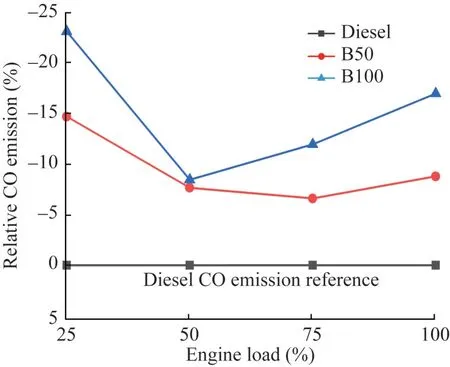
Figure 11 Variation of CO emission with engine load
4 Conclusion
In this study, experiments were conducted using biodiesel and its blends at four engine loads of 25%, 50%, 75%,and 100% of the propulsion characteristics of low-speed marine engines.The experimental results were compared with those of diesel as a reference to investigate the effects of biodiesel on the performance, combustion, and emis‐sion characteristics of low-speed marine engines.From the experimental results, the following main conclusions were drawn.
1) Owing to the lower calorific value of biodiesel, B100 has 13.5% higher BSFC and 3.8% lower BTE than diesel.A 3 ℃–5℃ drop in engine exhaust temperature is ob‐served under the same engine load.The performance of B50 lies between those of B100 and diesel.
2) The low engine exhaust temperature and poor atom‐ization of B100 result in a drop in the maximum in-cylin‐der pressure of about 1 Bar when the engine burns biodiesel.In addition, the peak combustion HRR of the engine using biodiesel is slightly lower than that using diesel.
3) The oxygen content in biodiesel and its blends is higher than that in diesel.This high oxygen content has a good suppression effect on pollutants such as black car‐bon, THC, and CO during combustion, reducing them by about 54.7%, 39%, and 11.3%, respectively.It also leads to a slight increase in NOxemissions.
At present, marine engines mainly use diesel fuel for performance optimization.In the future, parameters such as injection timing, injection pressure, and compression pressure can be adjusted when using biodiesel to improve the combustion and emission of biodiesel in low-speed two-stroke engines.
FundingMinistry of Industry and Information Technology High-tech Ship Research Project (Grant No.MC-202019-C08); Shanghai Ship Intelligent Operation and Maintenance and Energy Efficiency Monitoring Engineering Technology Research Center, Shanghai Science and Technology Program (Grant No.20DZ2252300).
Competing interestThe authors have no competing interests to declare that are relevant to the content of this article.
杂志排行
Journal of Marine Science and Application的其它文章
- Decarbonization of Ship Operations
- The Potential of Inedible Biodiesel as an Eco-Friendly and Sustainable Alternative Fuel for Marine Diesel Engines in India
- Combustion Characteristics of Diesel/Butanol Blends Within a Constant Volume Combustion Chamber
- Review of Risk Analysis Studies in the Maritime LNG Sector
- Environmental and Economic Evaluation of Dual-Fuel Engine Investment of a Container Ship
- Maritime Energy Transition: Future Fuels and Future Emissions
